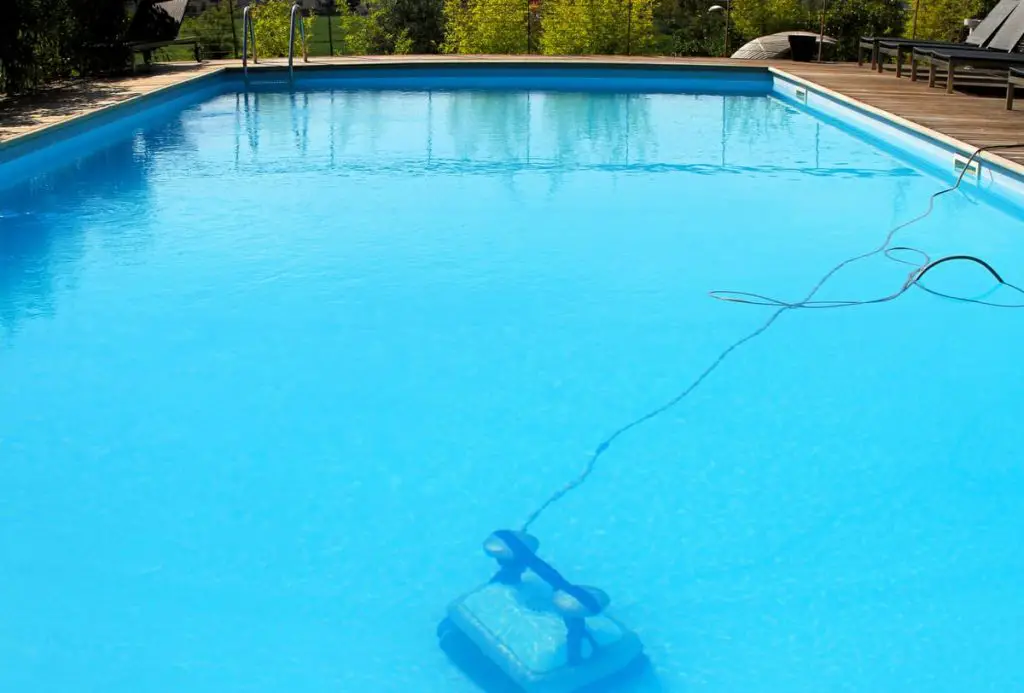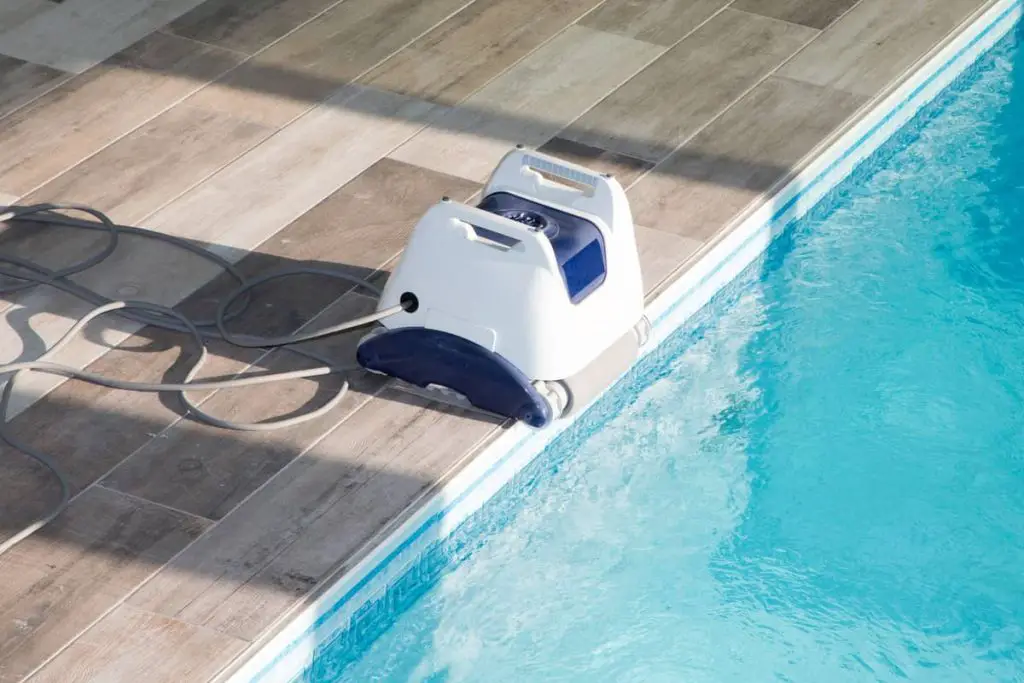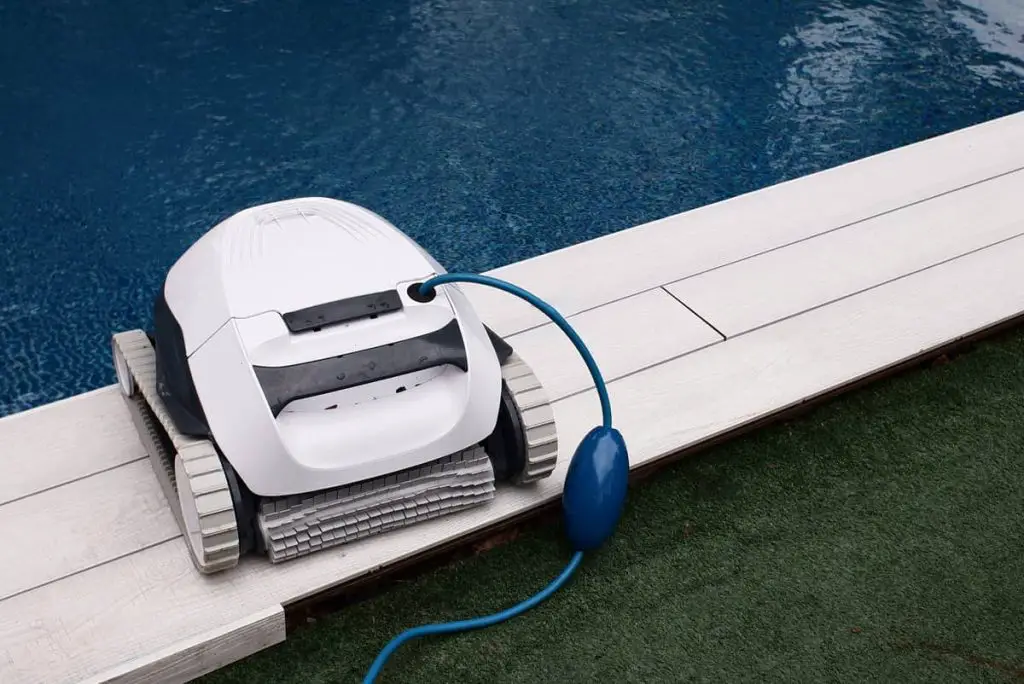A robotic pool cleaner is a must-have for pool owners. Amazingly, this electric-powered tool can be submerged in the water for hours without any issue. However, does that mean you can forget it in the pool forever?
Robotic pool cleaners can be left in the pool as they’re completely water-resistant. However, leaving the robotic cleaner in the water for extended periods can cause battery damage, clogging, and power line faults. Therefore, a best practice is to take the cleaner out after every use.
Having said that, if you end up needing to leave your cleaner in the pool for a day or two as a once off, you’re likely to be fine. To help you better understand the issues that can arise, I’ll explain in detail why you shouldn’t leave the robotic pool cleaner in the pool, how frequently you should leave the cleaner in the pool for cleaning, and how to take care of it for a longer lifespan.

Why You Shouldn’t Leave Your Robotic Pool Cleaner in the Pool
It is not a good idea to leave a robotic pool cleaner in the pool 24/7. Here are a few reasons why you shouldn’t leave them in the pool:
Quick Deterioration of the Pool Cleaner’s Parts
Water is one of the weathering agents of nature. It can hasten the deterioration of any object, even if it is water-resistant.
If you leave your robotic pool cleaner in the water all the time, the water molecules will eventually seam through the waterproof bond and damage the machine. In addition, the chlorine in pool water may corrode the cleaner’s metallic parts. Water-proof – yes. Chemical-proof? Not so much.
These physical and chemical processes may not happen in a couple of days, but leaving the cleaner in the water for a long time can result in total damage.
However, if you accidentally left your bot cleaner in the pool for a couple of days, you won’t have any issues as long as it is a quality cleaner, like the Dolphin Nautilus CC Plus by Maytronics – the EXACT one that I own. The best thing to do is give it a good rinse with hose water and refer to your user manual for any additional instructions from the manufacturer.
Risk of Battery Damage
Although battery-powered robotic cleaners are water-resistant and water can’t seam through the battery socket, leaving them in the pool permanently can break the bonds and damage the battery.
Over time, water molecules and dirt particles can have a negative impact on performance. Moreover, electric bindings can stream the current in the pool water and can be risky for swimmers if caught in the water. Thankfully, you can discard all risks by taking out the machine after use.
If the battery becomes damaged due to water, it’s next to impossible to repair it. The only option will be to spend a good chunk of money and change the battery. So, it is better to take precautions to avoid unnecessary repairs in the long run.

Filter Clogging
You’ll frequently need to take the bot cleaner out to clean the filters. Robotic pool cleaners filter water to collect dirt and garbage in the filter box. The small sediments cement together and may clog the filter hole.
If you don’t clean the filter box from time to time, the filter will clog and make the machine unfunctional. It can further increase the risk of extra energy usage, heating the device, and burning the wiring inside.
Hence, it’s recommended to wash the cleaner after use and keep it in a dry place when not in use. Regularly keeping an eye on the machine will also tell you if there is any other problem developing in the device.
Power Line Fault
If your robotic cleaner uses a direct electric supply when in use, you should turn off the switch after cleaning. Otherwise, the wire that connects the robotic cleaner and electric board will be lying on the ground exposed.
The open wire on the ground can invite a different set of problems than the malfunctioning of the machine. It’s best not to leave the electric cables on the ground to be safe from water splashing out of the pool or during the rainy season.
If you switch off the power after use but leave the wire on the ground and the robotic cleaner in the pool, the wire’s insulation can tear apart. Metal wires then will get exposed, making it dangerous for any family member, especially kids and pets.
Burning Out of the Motor
If you leave the robotic pool cleaner in the pool after use, fine debris will collect in and around the filter, restricting the functioning of the machine. The robotic cleaner will struggle to perform its task. The extra burden will result in the burning out of the motor.
Burning out of the motor can also occur due to long hours of usage and extra burden on the machine.

How Frequently Should You Run Your Robotic Cleaner in the Pool?
Robotic pool cleaners are quick at their job. They generally take up to three to four hours to clean an average-sized pool. This amount of time may allow you to run them daily if needed, but for most pools that would be unnecessary.
The frequency of running the cleaner in the pool depends on how crowded your pool is. If the swimming pool is used by a lot of people every day, you may want to run the bot cleaner after swimming. In contrast, if your pool is occasionally used, you can run it once every one to two weeks.
Robotic cleaners are fully automated. They do their jobs without your help and supervision. Considering their feasibility, you can run them more frequently than needed. Be sure to take the pool cleaner out of the water, rinse filters after use, and store them in a dry place.
Conclusion
Robotic pool cleaners are designed to be submerged for hours. However, it’s best not to leave the cleaner in the pool when not in use to avoid battery damage, clogging in the filter due to constant usage, and burning the motor out due to extra exertion.
You can run the robot pool cleaner in the pool every day or weekly. Keeping the water exposure of the device limited and cleaning the filters will enhance the performance and lengthen the life of your robotic cleaner.
